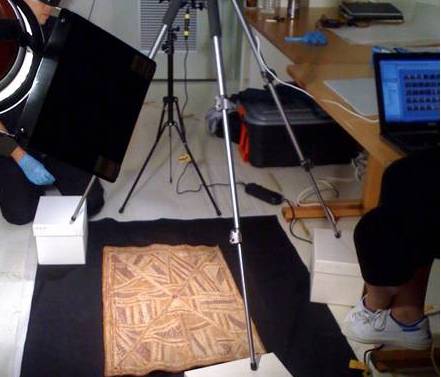Since 2009 the ATSIDA Project has been facilitating dialogue between the Buku-Larrŋgay Mulka Centre, Yirrkala, Arnhem Land, and the University of Sydney, Macleay Museum. Together we are working through the cultural protocols and parameters for making a collection of early Yolngu bark paintings available as a shared research data-set via the ATSIDA website.
Created by Yolngu artists at Yirrkala in the mid-1940s the paintings today held by the Macleay Museum were made to demonstrate important cultural knowledge. Collected by anthropologists, Ronald and Catherine Berndt, many of the paintings are the work of important Elders, including some who went on to become internationally recognised artists. Documenting significant aspects of their history, artistic and cultural heritage, the paintings hold continued importance to the Yolngu community today.
In order to make the bark paintings more accessible to the Yolngu community and others, the project aims to digitise and provide access to them via the ATSIDA website. To Yolngu people the designs and symbols in the paintings embody knowledge which can be read at different levels. So, as a first step, the bark paintings have been digitally photographed. However, there are a range of other contextual records that bring out different aspects of their history as well as making them more accessible to other audiences. These include; summaries of the mid-1940s field notes made by anthropologist Ronald Berndt recording information directly from the artists, and 1975 audio recordings and transcription of interviews with Elder, Wandjuk Marika, which also explain their meaning and cultural associations. All of these records are being digitised. Together they comprise an important archive of this set of early Yolngu bark paintings from Yirrkala, documenting their creation, their embedded knowledge, relationships, and their continued and changing significance through time.

ATSIDA and Macleay Museum staff working on imaging the Berndt Barks.
Photo reproduced with permission of Mulka Project and Macleay Museum.
